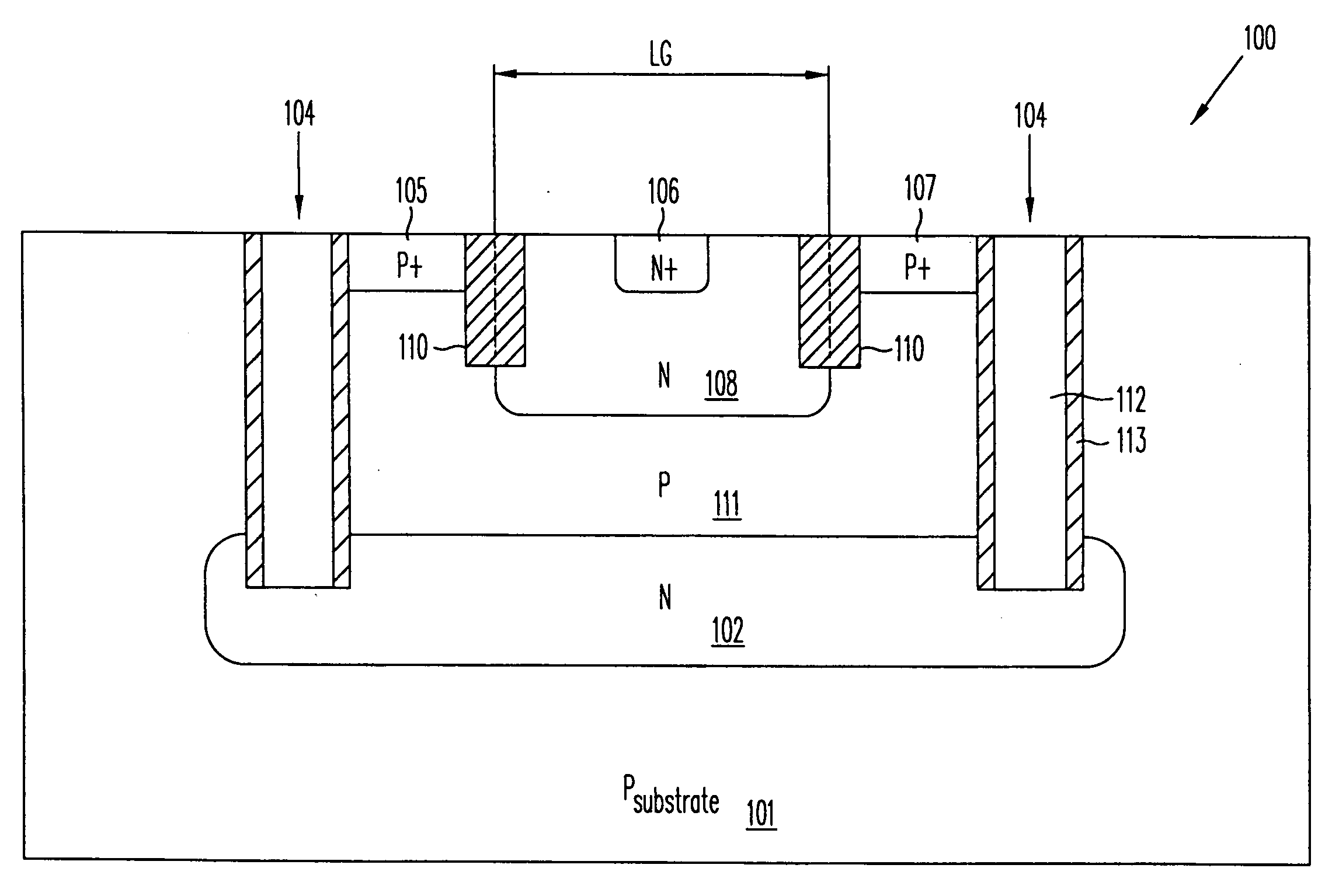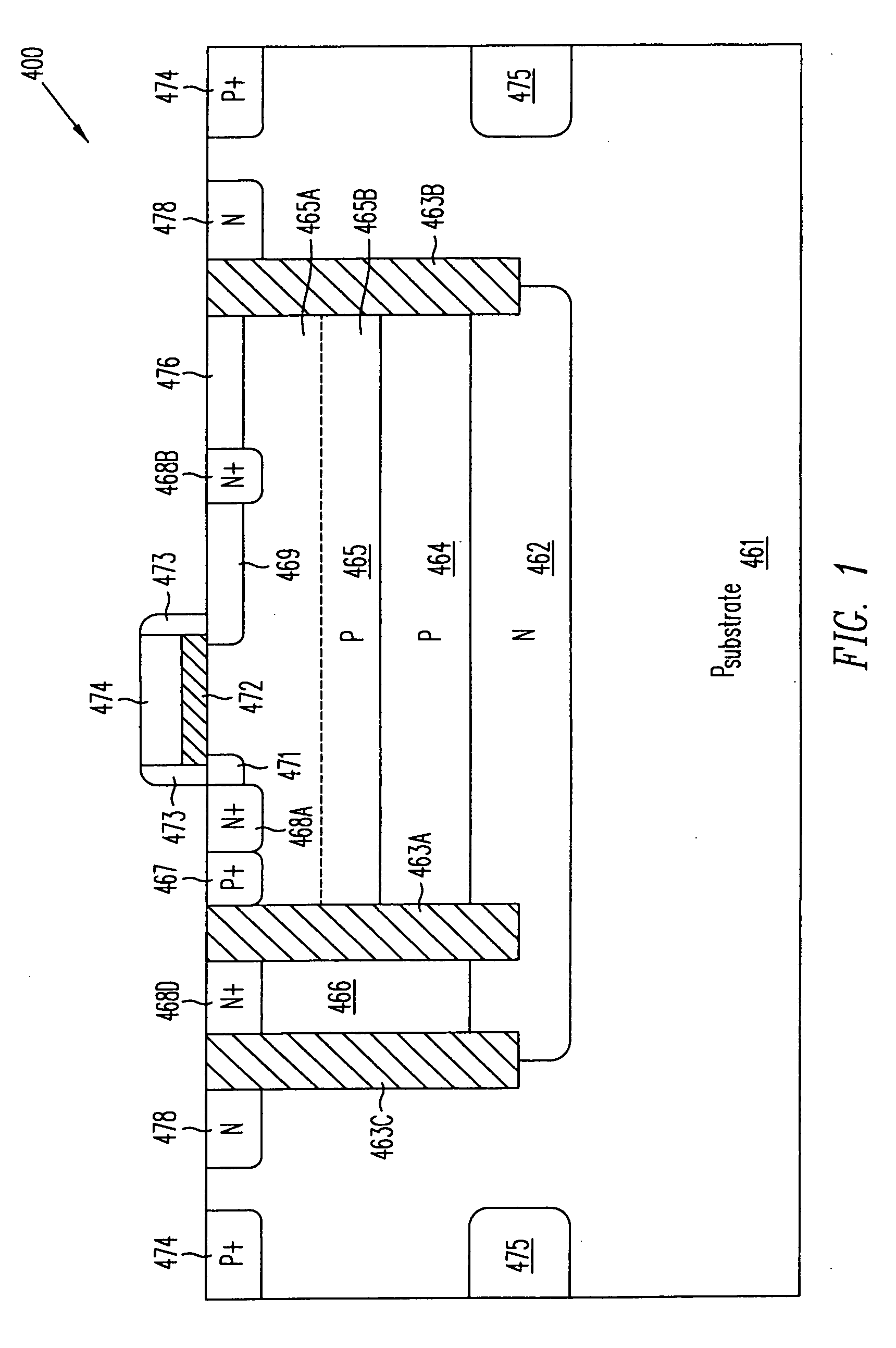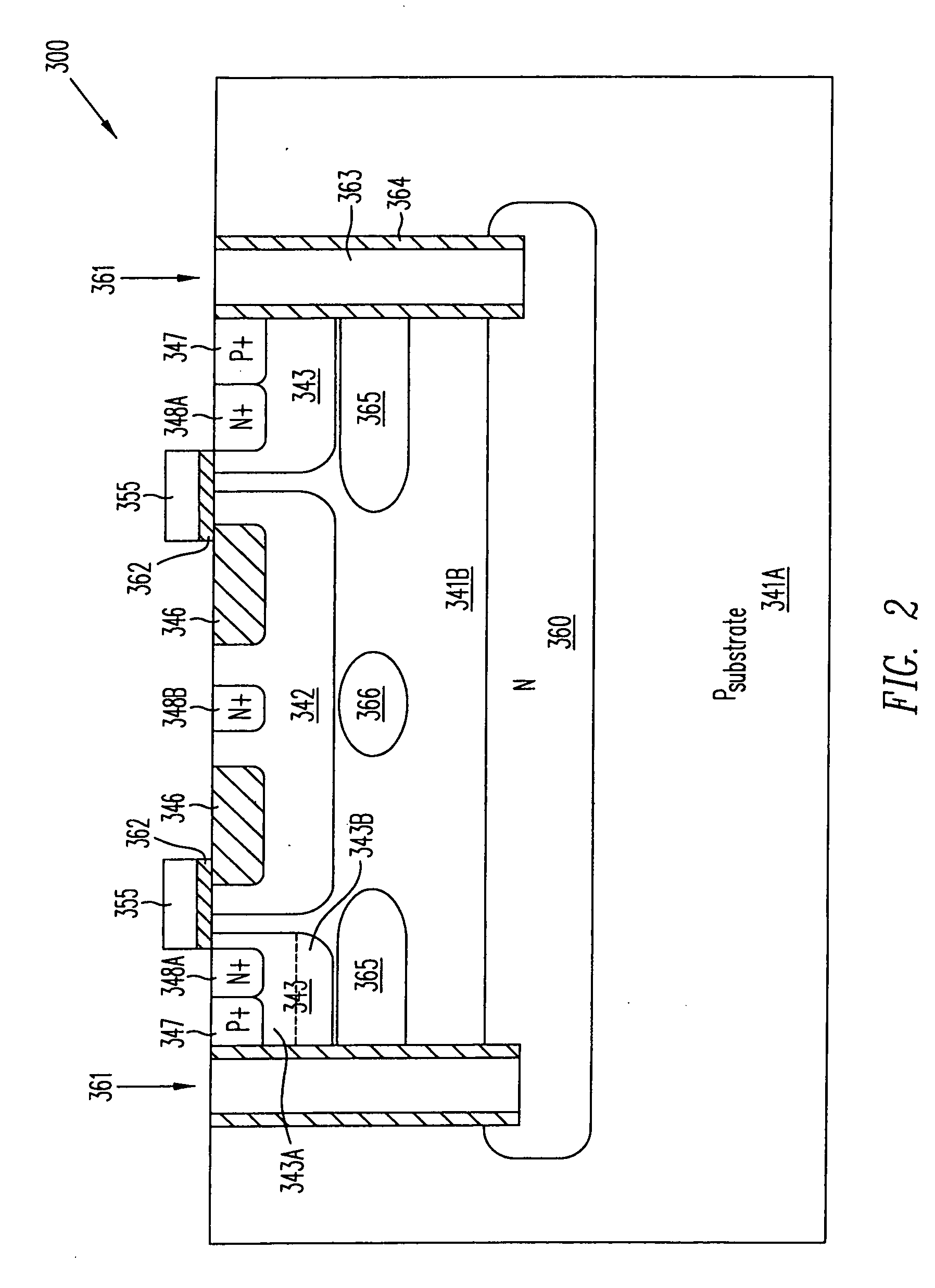Isolated junction field-effect transistor
a field-effect transistor and isolation junction technology, applied in the direction of transistors, semiconductor devices, electrical apparatus, etc., can solve the problems of difficult current sensing, inability to facilitate complete electrical isolation, and inability to facilitate the electrical isolation of its fabricated devices, so as to reduce charging and other time-dependent surface-related phenomena
- Summary
- Abstract
- Description
- Claims
- Application Information
AI Technical Summary
Problems solved by technology
Method used
Image
Examples
Embodiment Construction
[0032]FIG. 1 illustrates a schematic cross-section of a fully isolated N-channel lateral DMOS (LDMOS) 400 made in accordance with this invention and fabricated without the need for epitaxial deposition or high temperature diffusions. The LDMOS 400 is fabricated in isolated P-type region 464. P-type region 464 and the lateral DMOS 400 fabricated within P-type region 464 are isolated from P-type substrate 461 by high-energy implanted N-type floor isolation region 462 and dielectric-filled trenches 463A and 463B.
[0033]The N-channel LDMOS 400 comprises: N+ drain region 468B, spaced from gate 474 by implanted N-type lightly-doped drain (LDD) region 469 and spaced from trench 463B by LDD 476 region, gate 474, preferably comprising polysilicon and / or silicide, gate oxide layer 472, N+ source region 468A, P+ body contact region 467 contacting a P-type well 465 comprising the body region of LDMOS 400. P-type well 465 may include at least an upper portion 465A and a lower portion 465B or any ...
PUM
 Login to View More
Login to View More Abstract
Description
Claims
Application Information
 Login to View More
Login to View More - R&D
- Intellectual Property
- Life Sciences
- Materials
- Tech Scout
- Unparalleled Data Quality
- Higher Quality Content
- 60% Fewer Hallucinations
Browse by: Latest US Patents, China's latest patents, Technical Efficacy Thesaurus, Application Domain, Technology Topic, Popular Technical Reports.
© 2025 PatSnap. All rights reserved.Legal|Privacy policy|Modern Slavery Act Transparency Statement|Sitemap|About US| Contact US: help@patsnap.com



